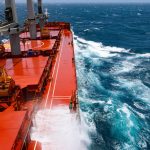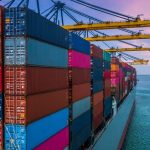For small and medium-sized shipowners operating fleets of 4 to 12 vessels, running a successful shipping business today requires more than just managing daily operations. Freight market volatility, rising insurance costs, regulatory changes, and operational inefficiencies create financial and operational uncertainty, making it harder for smaller fleet operators to compete with larger, more resourceful shipowners.
Unlike bigger players who have dedicated risk managers and financial teams, small and medium-sized owners often lack the structured tools to optimize their fleet’s performance. Many operate reactively, dealing with one problem at a time rather than implementing a proactive, integrated strategy to ensure long-term stability.
This is where the Systems Approach to Ship Management comes in—a structured, strategic methodology that integrates financial planning, risk prevention, operational efficiency, and adaptability into a cohesive framework.
For over 34 years, since its establishment in 1991, Marasco Marine Ltd has been focused on helping small and medium-sized shipowners survive and thrive—particularly in freight recessions and highly volatile markets. By applying the Systems Approach, Marasco has successfully helped shipowners regain control, optimize costs, and improve their financial and operational resilience.
Why Traditional Management Fails for Smaller Fleets
Most small and medium-sized shipping companies manage their business in a fragmented way, focusing on individual aspects rather than looking at the big picture. This leads to:
Freight revenues being disconnected from insurance costs and operational expenses.
Overpaying for insurance due to inefficient policy structures and unnecessary overlaps.
Operational costs increasing without proper visibility, leading to cash flow shortages.
Frequent marine claims that drive insurance premiums higher, impacting long-term profitability.
In contrast, successful fleet operators apply a Systems Approach, ensuring that every aspect of their business is interconnected and optimized.
The Systems Approach: A Smarter Way to Manage a Shipping Business
Instead of treating insurance, operations, and financial management as separate concerns, the Systems Approach integrates them into a single, adaptable strategy that enables shipowners to control costs, manage risks, and build resilience.
Step 1: Establish a Centralized Financial Monitoring System
- A structured financial dashboard consolidating freight income, insurance costs, and operational expenses.
• Regularly updated for real-time decision-making and risk assessment.
• Allows shipowners to detect hidden inefficiencies before they escalate into financial problems.
Example: A shipowner with three bulk carriers was struggling with unstable cash flow due to rising insurance costs and uncontrolled crew travel and medical expenses. By applying a structured financial monitoring system, he optimized his expenses and reduced his insurance and crew travel costs by 30%.
Step 2: Align Insurance Costs with Operational Strategy
- Benchmark premiums against market standards to avoid unnecessary overpayment.
• Adjust war risk coverage and deductibles based on actual trade routes and risk exposure.
• Risk Prevention: Analyze claims history to detect and prevent recurring incidents that drive up premiums.
Example: A company managing six dry bulk carriers was unknowingly paying 15% more in premiums due to overlapping policies and inefficient claims management. Marasco Marine Ltd restructured their coverage, reducing annual insurance costs by USD 120,000.
Step 3: Control Operational Costs Without Sacrificing Efficiency
- Monitor crew costs, including overtime and travel expenses, to reduce unnecessary expenditures.
• Optimize fuel consumption and bunkering strategies to avoid excessive costs.
• Risk Prevention: Implement predictive maintenance schedules to prevent unexpected machinery breakdowns.
Example: A shipowner with five tankers implemented a predictive maintenance strategy that reduced machinery damage claims by 40%, leading to lower insurance premiums and fewer disruptions in operations.
Step 4: Proactive Risk Prevention to Lower Claims & Insurance Premiums
- Reduce machinery damage claims through structured maintenance, risk prevention programs.
• Improve crew safety and onboard procedures to minimize liability claims.
• Ensure efficient claims handling to secure faster settlements and avoid financial strain.
Example: A fleet of seven bulk carriers implemented Marasco’s proactive claims management strategy, reducing their claim frequency and securing a 7.5% reduction in their overall insurance premiums.
Step 5: Strengthen Cash Flow & Long-Term Financial Stability
- Align cash reserves with operational needs to maintain liquidity in volatile markets.
• Adjust freight pricing strategies based on actual cost structures, not assumptions.
• Develop structured payment plans for major expenses like dry-docking.
Example: A shipowner managing six vessels applied Marasco’s structured financial system, resulting in:
- Better visibility over cash flow, eliminating surprise shortfalls.
• More predictable insurance and maintenance expenses, improving financial planning.
• USD 200,000 in annual cost savings, enabling long-term growth and stability.
Why This Matters: A Long-Term Strategy for Success
Small and medium-sized shipowners who fail to implement a structured Systems Approach to ship management struggle to remain competitive. Operating in a volatile industry without financial and operational visibility means constantly reacting to cash shortages, rising premiums, and inefficiencies.
With Marasco Marine Ltd’s expertise, shipowners can take control of their business through an integrated strategy—reducing unnecessary expenses, optimizing risk management, and ensuring financial resilience.
For over 33 years, Marasco Marine Ltd has helped small and medium-sized shipowners take control of their business, reduce financial uncertainty, and build long-term resilience. The Systems Approach is a proven strategy that allows shipowners to navigate market challenges, optimize their operations, and achieve sustainable success.
Source: By Mr Anastasios A Maraslis, Founder & President of Marasco Marine Ltd, Founder & President of Shipowners Trust International Corp.
Tankers: Are FPSOs Truly Back?
For many years, a business venture in the FPSO market could be seen as highly speculative and risky. However, things could be starting to reverse, which in turn can offer a boost in the tanker market. In its latest weekly report, shipbroker Gibson said that “floating production storage and offloading platforms (FPSOs) are having somewhat of a renaissance. After a challenging covid period higher oil prices carried with it a larger orderbook for FPSOs, several of which are due to be delivered this year. FPSOs allow flexibility in deployment and give cost advantages over traditional production infrastructure, and notably, are currently mostly being deployed offshore, relying on tankers for further transport of oil”.
According to Gibson, “Guyana is this decade’s poster child of the successful use of FPSOs. Since late 2019 three FPSOs have been installed off the coast of Guyana, Liza Destiny (120 kbd) and Liza Unity (220 kbd), followed by Prosperity (220 kbd), which are mostly responsible for growing the country’s exports to 620 kbd in 2024. Of this output, around 500 kbd was carried on Suezmaxes, and 100 kbd on VLCCs, largely to Asia, Europe, and the Mediterranean. It was reported this week that the One Guyana with a capacity of 250 kbd has left Singapore and is travelling to Guyana, to start ramping up production in Q2 and Q3 of this year, adding a further 100 kbd to oil production over the year. Two more units, each expected to have 250 kbd of capacity, are under construction and scheduled to start production in 2026 and 2027”.
“Meanwhile, Brazil is looking to mirror this success by bringing four FPSOs, with a total capacity of around 800 kbd online in 2025. These units are slated to contribute 220 kbd of additional supply this year, and most of these barrels are likely to be exported on VLCCs and Suezmaxes as well. As in Guyana, more FPSOs are expected in Brazil for 2026 and beyond, although Petrobras has tempered expectations by announcing additional maintenance and slower than projected ramp up and commissioning of FPSOs Mero 3 and Almirante Tamandare. In the US Gulf, the Mad Dog 2 will bring 140 kbd of capacity online later this year, bringing the total in the Americas alone to seven FPSOs for 2025. With Norway and China as well as several West African countries all adding capacity, and projects awaiting final investment decisions in Namibia and Suriname in the coming years, offshore production and FPSOs are helping to contribute a significant share of supply growth”, Gibson said.
The shipbroker said that “the consequences for dirty tanker markets seem positive. However, the key question of where demand for these supply additions will come from remains, with supply growth projected to outgrow demand growth this year, challenging current OPEC+ plans. As previously reported, predicted demand growth in the Far East could give rise to new tonne mile demand for VLCCs and Suezmaxes. The medium grades from Brazil and Guyana have so far offered a welcome alternative for European refiners to the very light US exports. Yet with demand in Europe set to slow this could push barrels East. Recent sanctions on both Russia and Iran have seen more barrels move from West to East, supporting this notion”, Gibson concluded.
Nikos Roussanoglou, Hellenic Shipping News Worldwide






